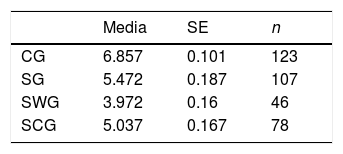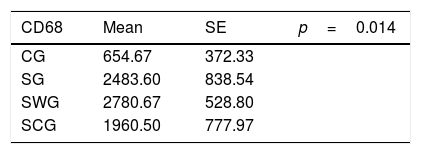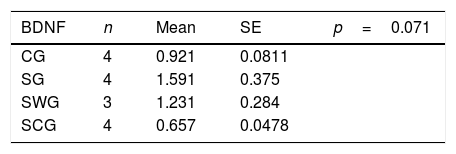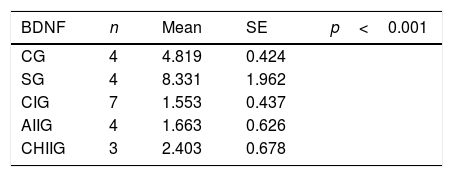Spinal cord injury (SCI) is a complex pathology with thousands of patients worldwide. During the acute early phase, neural tissue shows some regenerative properties that disappear at the chronic phase. Shock Waves and Stem Cells have been proposed as a possible therapy.
MethodsHere, we analyse Shock Waves’ immediate effect over spinal cord genetic response in the injured and healthy spinal cord and the effect of Shock Waves and combined Shock Waves plus Stem Cells distally grafted to treat the first month after spinal cord injury.
ResultsThe immediate application of shock waves increases VEGF (Vascular Endothelial Growth Factor) but reduces the BDNF (Brain-Derived Growth Factor) RNA (Ribonucleic acid) response. Shock wave therapy increases GFAP (Glial fibrillary acidic protein) positive cells and vascularity during the treatment's acute phase.
ConclusionShock wave treatment seems to be enough to produce benefits in the acute phase of spinal cord injury, with no accumulative positive effects when mesenchymal stem cell graft is applied together.
La lesión medular es una afección compleja con miles de pacientes repartidos a lo largo del mundo. Durante la fase aguda temprana de la lesión, el tejido neural muestras ciertas propiedades regenerativas que desaparecen durante la fase crónica. Las ondas de choque y las células madre han sido propuestas como posibles terapias.
MetodologíaEn este estudio analizamos el efecto inmediato de una sesión de ondas de choque sobre la médula espinal, tanto sana como lesionada, y si su efecto es sumatorio al que produce un tratamiento de células madre mesenquimales inyectadas distalmente, como se ha observado en estudios previos.
ResultadosSe observa un efecto inmediato con las ondas de choque que promueve un incremento del efecto trófico vascular endotelial, y una disminución del factor trófico derivado del cerebro. La terapia prolongada con ondas de choque en la fase aguda incrementa la presencia de astrocitos y la vascularización local. No parece haber efecto sumatorio con el tratamiento de células madre, produciéndose efectos similares con o sin las células madre mesenquimales.
ConclusionesLas ondas de choque parecen tener un efecto positivo durante la fase aguda de una lesión medular por compresión, sin que el tratamiento distal de células madre mesenquimales parezca implicar un efecto sumatorio.





















